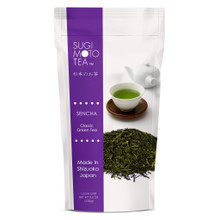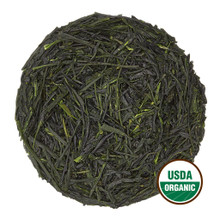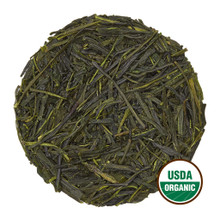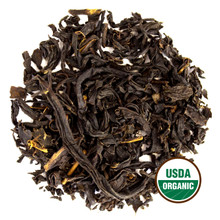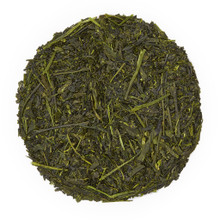Behind the Matcha Shortage - What the Tea Industry is Facing
In recent years, the love for matcha has grown beyond anything we could have imagined. From traditional tea preparation to lattes, smoothies, and baked goods, matcha has found its way into the daily lives of people around the world. As a Japanese tea producer, we’re grateful for the enthusiasm and appreciation for this vibrant tea.
At the same time, we’ve been facing new challenges behind the scenes—challenges we feel it’s important to share with you.
What’s Behind the Shortage?
Skyrocketing demand, especially for high-quality ceremonial matcha, is one of the main reasons behind the current shortage. Ceremonial matcha is a delicate product, crafted from tender tea leaves that are shaded and hand-picked once a year in the spring. Because of this, there’s a finite amount that can be produced each year, regardless of how high demand becomes.
An aging farming population:
Japan’s tea industry faces a serious generational shift. Many tea farmers today are in their 60s, 70s, or even older. With fewer young people choosing farming as a career, there are not enough new farmers to take over existing tea fields or expand production. As a result, even as demand rises, the number of active tea farms continues to decline.
Climate impacts:
Tea farming is highly sensitive to weather conditions. Irregular rainfall, unexpected frost, and shifting temperature patterns, made worse by climate change, can damage delicate tea leaves or disrupt the timing of harvests. A single frost during the shading period, for example, can ruin an entire year's crop of ceremonial matcha-grade leaves.
Limited tea fields and slow expansion:
Expanding matcha production is not as simple as planting more tea bushes. It takes about five years for a new tea plant to mature enough to produce high-quality leaves suitable for ceremonial matcha. Even with government initiatives encouraging new planting, potential increases in supply will take years to materialize, not months.
Expensive and Limited Machinery:There is a significant shortage of tencharo (tencha roasting machines). About 95% of tea producers mainly manufacture sencha, while tencha—used to make matcha—has historically accounted for only a very small portion of total green tea production, making it quite rare. In recent years, demand for tencha has grown, and more tencha processing facilities are being established. However, it takes at least a year and a half from the initial planning stages to get a factory up and running.
In short, even with growing interest around matcha, the natural and traditional way it's produced places concrete limits on how much is available.
How Sugimoto Tea Is Responding
At Sugimoto Tea, our mission has always been rooted in sustainability, quality, and supporting the farmers who grow the tea we proudly share. To adapt to these new challenges, we are taking several important steps:
Working closely with partner farms: Careful forecasting helps farmers plan harvests and avoid waste.
Building relationships with new farmers: Expanding our partnerships ensures a stable future for tea production.
While these efforts won’t solve the shortage overnight, we believe they are critical to ensuring the long-term sustainability of high-quality Japanese tea.
What Customers Can Expect (and How You Can Help)
As the matcha landscape shifts, we want to share what to expect moving forward, and how you, as a tea lover, can make a difference:
Seasonality: High-quality ceremonial matcha is harvested only once a year, during the spring first flush. Because of the limited harvest window and the careful processing required, ceremonial matcha may increasingly become a seasonal product, primarily available after each new spring harvest. After the initial release, availability may decrease throughout the year until the next harvest season.
Exploring other teas: Japan produces a wide variety of green teas beyond matcha, each with its own unique character. When ceremonial matcha is limited, it’s a perfect opportunity to explore teas like sencha, a refreshing steamed green tea, or genmaicha, a comforting blend of green tea and roasted rice. These teas also reflect the seasonality and craftsmanship of Japanese tea and can offer new favorites to enjoy throughout the year.
Understanding Matcha Grades: Matcha is not about right or wrong. It is about the suitability of each grade for the utilization. Ceremonial Matcha is carefully created for traditional, ceremonial preparation. Its delicate sweetness, rich umami, nuance, and smooth finish can be fully appreciated using only water. When it comes to matcha lattes, smoothies, and baking, a culinary-grade matcha is the perfect fit. These matcha types have a stronger, more robust flavor profile that holds its own when combined with sugar, milk (dairy or other), and whatever else.
Out of transparency, we also want to mention that the cost of matcha may rise in the future. Factors like farming challenges, limited supply, and potential tariffs could lead to price increases. We are doing everything we can to manage this thoughtfully, but we feel it is important to keep you informed.
Our Commitment
We are deeply grateful for your support and understanding during this time. Every cup of tea you enjoy helps us support our farmers, protect traditional tea-making methods, and continue producing matcha with integrity and care.
At Sugimoto Tea, we will never sacrifice quality for quantity. Even if it means certain products may be temporarily unavailable, we are committed to upholding the standards and traditions that make Japanese tea so special.
Thank you for being part of this journey with us. Together, we can help preserve the future of matcha for generations to come.
